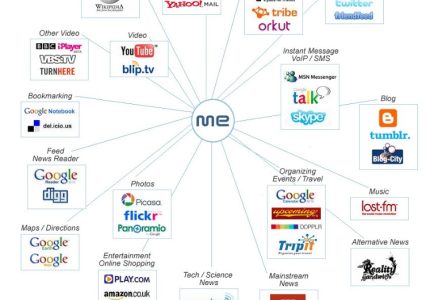Understanding Simple Website Design
Understanding simple website design is essential for creating user-friendly and visually appealing online pages. It focuses on clean layouts, easy navigation, and straightforward content that enhances the user experience. By concentrating on simplicity, designers can develop websites that are accessible, efficient, and effective in conveying their message.
Definition and Principles
Simple website design refers to creating websites that are clean, easy to navigate, and visually appealing without unnecessary complexity. It focuses on clarity and functionality to ensure users can find information quickly and efficiently. Principles of simple website design include minimalism, consistent layout, effective use of whitespace, and straightforward navigation structures. By emphasizing essential elements and avoiding clutter, a simple website enhances user experience and communicates its purpose clearly, making it accessible to a wider audience. This approach also helps in faster website loading times and easier maintenance, promoting overall usability and effectiveness of the site.
Advantages of Simple Design
Understanding simple website design involves focusing on clean, minimal, and user-friendly layouts that enhance the user experience. It emphasizes clarity, easy navigation, and straightforward visuals, allowing visitors to find information quickly without distractions.
The advantages of simple design include faster website load times, which improve user satisfaction and search engine ranking. It also ensures better readability and accessibility for a wider audience, making content easier to understand. Additionally, simple websites tend to be less costly and easier to maintain, enabling swift updates and consistent performance. Overall, a simple design creates a professional appearance while maintaining functionality and user engagement.
Planning Your Website
Planning your website is a crucial step toward creating a effective and user-friendly online presence. It involves determining the purpose, target audience, and essential features that will deliver a seamless experience. A well-thought-out plan lays the foundation for a simple website design that is both attractive and easy to navigate, ensuring visitors can find what they need effortlessly.
Identifying Target Audience
Identifying your target audience is a crucial step in planning a simple website design. Understanding who your visitors are helps you tailor the content, layout, and functionality to meet their needs and expectations. Consider factors such as age, gender, interests, location, and browsing habits to create a clear profile of your ideal user. This knowledge allows you to focus on providing relevant information with an intuitive and user-friendly interface.
When planning a simple website, keep the audience’s preferences in mind to ensure your design is accessible and easy to navigate. Use straightforward language, clear headings, and minimal clutter to enhance user experience. By aligning your website’s features with your target audience’s needs, you increase engagement and achieve your goals more effectively.
Setting Clear Goals
Setting clear goals is a fundamental step in planning your simple website design. It helps determine the overall structure, content, and functionality needed to meet your objectives. Consider what you want visitors to do on your site, such as learning about your services, making a purchase, or contacting you. Clearly defined goals guide the layout and ensure that your website is focused and user-friendly. By establishing specific, measurable goals from the outset, you can create a streamlined design that effectively communicates your message and provides a positive experience for your visitors.
Creating a Site Map
Creating a site map is an essential step in planning your simple website design. It serves as a visual outline of your website’s structure, helping you organize content and determine how different pages will connect. A clear site map ensures that visitors can navigate easily and find information efficiently. When designing a site map, start by listing your main categories or sections, such as Home, About, Services, and Contact. Then, add subpages under each category, if applicable, to create a logical hierarchy. This planning process not only enhances user experience but also simplifies development, allowing you to focus on creating a streamlined and intuitive website layout. Overall, a well-thought-out site map is the foundation of a successful simple website design, guiding both design and content decisions effectively.
Design Elements
In simple website design, the effective use of design elements plays a crucial role in creating a visually appealing and user-friendly experience. These elements, including layout, color, typography, images, and whitespace, work together to communicate the intended message clearly and guide visitors seamlessly through the site. Understanding and thoughtfully applying these basic components ensures that a website remains both functional and aesthetically pleasing.
Color Scheme Selection
When creating a simple website, selecting the right design elements and color scheme is essential to ensure a clean and effective user experience. Clear and minimal design elements, such as straightforward typography, consistent iconography, and balanced spacing, help maintain visual harmony and ease of navigation. Choosing a cohesive color scheme involves selecting a primary color that reflects the website’s purpose and a limited palette of complementary or analogous colors to enhance visual interest without overwhelming the viewer. Neutral tones for backgrounds can provide a calm foundation, enabling important content and calls to action to stand out. Overall, simplicity in design and thoughtful color choices work together to create an inviting, professional, and user-friendly website.
Typography Choices
In simple website design, selecting the right design elements and typography choices is essential to create a clean, user-friendly interface. Minimalistic layouts emphasize whitespace and straightforward navigation, making content more accessible and visually appealing. Consistent use of color schemes and simple icons further enhances the overall aesthetic without overwhelming visitors. When it comes to typography, choosing clear and legible fonts such as sans-serif types ensures readability across devices. Limiting the number of font styles and sizes helps maintain a cohesive look, guiding users naturally through the content. Overall, thoughtful design elements combined with strategic typography choices contribute to an effective and aesthetically pleasing website design.
Layout and Structure
Simple website design emphasizes clarity and ease of use through carefully chosen design elements, layout, and structure. It relies on minimalistic visuals, clean lines, and a limited color palette to create a cohesive and professional appearance. Clear typography and ample white space help improve readability and guide the user’s attention to important sections. Structuring content logically ensures visitors can easily navigate the site and find information quickly. A well-organized layout typically employs a grid system or consistent alignment to create order and harmony, making the website intuitive and visually appealing.
Content Development
Content development plays a crucial role in creating effective and engaging simple website designs. It involves crafting clear, concise, and meaningful text that communicates the purpose of the site while enhancing user experience. Well-developed content ensures that visitors can easily understand the message and navigate the website seamlessly, making it an essential element of minimalist design approaches.
writing Clear and Concise Text
When creating a simple website, developing clear and concise content is essential to effectively communicate your message to visitors. Focus on using straightforward language that is easy to understand, avoiding jargon or complex sentences. Break down information into small, digestible sections with short paragraphs to enhance readability. Use headings and bullet points to organize content logically, guiding users quickly to the information they seek. Well-crafted, clear text not only improves user experience but also helps convey professionalism and trustworthiness in your design.
Using Visuals Effectively
Using visuals effectively is a key component of simple website design, as it helps to communicate messages clearly and engage visitors instantly. Incorporating high-quality images, icons, and graphics provides visual interest without cluttering the layout, making information more accessible and easier to understand. Strategically placed visuals can guide users through the website, highlight important features, and emphasize calls to action. To maximize their impact, visuals should be consistent in style, color, and tone, complementing the overall minimalist design. Balancing visuals with ample white space ensures the site remains clean, easy to navigate, and visually appealing to users.
Organizing Content for Readability
Effective content development and organizing content for readability are essential aspects of simple website design. Clear and well-structured text helps visitors quickly find the information they need and enhances overall user experience. Use concise language and break content into manageable sections with descriptive headings to guide readers through your site seamlessly. Incorporate bullet points and numbered lists to present key points clearly, avoiding large blocks of text that can be overwhelming. Additionally, maintain a logical flow by arranging information in a sequence that makes sense, ensuring each section leads naturally to the next. Proper spacing, clean typography, and a consistent layout further contribute to readability, making your website more accessible and visually appealing.
Navigation and User Experience
Effective navigation and user experience are essential components of simple website design, ensuring visitors can effortlessly find the information they need. A well-organized navigation structure enhances usability, making the website more intuitive and engaging. By focusing on clear pathways and a clean layout, designers can create a seamless browsing experience that encourages users to stay longer and explore more.
Creating Intuitive Menus
Creating intuitive menus is a fundamental aspect of simple website design that significantly enhances user experience. When menus are easy to understand and navigate, visitors can find information quickly and efficiently, leading to increased engagement and satisfaction. To achieve this, it’s important to use clear, descriptive labels for menu items and organize them logically, prioritizing the most important sections. Using a consistent layout, minimal clutter, and familiar design patterns helps users intuitively understand how to move through the website. Responsive menus that adapt seamlessly to different devices also improve accessibility, ensuring a smooth browsing experience across desktops, tablets, and smartphones. Ultimately, simple, well-structured navigation fosters a positive user journey and encourages visitors to explore more of the website’s content with ease.
Minimizing Clicks to Key Pages
Effective website design focuses on creating a seamless navigation experience that guides users quickly to important pages. Minimizing the number of clicks needed to reach key content enhances user satisfaction and encourages engagement.
- Plan a clear and logical site structure, grouping related pages together
- Use a prominent and intuitive navigation menu placed in easily accessible areas
- Implement shortcut links to frequently visited pages, such as homepage, contact, and services
- Utilize breadcrumbs to help users understand their location within the website
- Incorporate search functionality for quick access to specific content
- Limit the depth of navigation by keeping essential pages within two or three clicks from the homepage
- Use descriptive labels for menu items to reduce confusion and improve usability
- Ensure that mobile navigation is optimized for touch and small screens for quick access on all devices
Ensuring Mobile Responsiveness
Navigation and user experience are essential elements of simple website design, contributing to how easily visitors can find information and interact with the site. Clear and intuitive menus, logical page structure, and minimalistic layouts help users navigate without confusion or frustration. Designing for simplicity ensures that users can quickly access what they need, promoting engagement and satisfaction. Ensuring mobile responsiveness is equally important, as a significant portion of users access websites via smartphones and tablets. Responsive design techniques, such as flexible grids and scalable images, guarantee that the website adapts seamlessly to various screen sizes. This creates a consistent and user-friendly experience across all devices, encouraging longer visits and higher conversion rates. Overall, focusing on straightforward navigation and mobile responsiveness enhances usability and supports effective communication of the website’s purpose.
Technical Aspects
Technical aspects play a crucial role in creating a simple and effective website design. They encompass the foundational elements such as coding languages, server setup, and site architecture that ensure the website functions smoothly and efficiently. Understanding these aspects helps designers build sites that are not only visually appealing but also reliable and easy to maintain. Focusing on technical fundamentals is essential for delivering a seamless user experience and supporting future scalability.
Choosing a Website Builder or Platform
When focusing on simple website design, selecting the right website builder or platform is crucial to ensure ease of use and efficient results. Technical aspects such as ease of customization, available templates, and integration capabilities play a significant role. Many platforms offer drag-and-drop editors that simplify the design process, making it accessible for users without coding experience. Compatibility with various devices and browsers is also essential to provide a seamless user experience. Additionally, considerations like hosting options, security features, and the availability of support can influence the choice, helping to maintain a clean, functional, and visually appealing website efficiently.
Optimizing for Speed
Optimizing a simple website for speed involves several technical strategies that enhance user experience and reduce load times. Efficient coding practices, such as minimizing HTML, CSS, and JavaScript files, help decrease file sizes and improve load performance. Using lightweight frameworks and avoiding unnecessary scripts further streamline the website. Leveraging browser caching allows resources to be stored locally, reducing server requests on subsequent visits. Compressing images with modern formats like WebP and utilizing appropriate dimensions ensures faster image loading without quality loss. Additionally, implementing lazy loading delays the loading of off-screen content until needed, improving perceived speed. Overall, focusing on clean, minimal code and optimized assets ensures that simple websites load quickly and efficiently across devices and network conditions.
Implementing SEO Basics
Implementing SEO basics in simple website design involves optimizing various technical elements to improve search engine visibility and user experience. Ensuring that your website has clean, well-structured code helps search engines crawl and index your content effectively. Including relevant meta tags, such as title tags and meta descriptions, provides clear information about each page’s purpose. Additionally, creating a clear URL structure with descriptive keywords enhances both usability and search rankings. Fast loading times are crucial, so optimizing images and minimizing code can significantly impact performance. Implementing responsive design ensures your website functions well across all devices, which is favored by search engines. Finally, integrating a sitemap and robots.txt file assists search engines in efficiently crawling and indexing your site’s content, laying a solid foundation for effective SEO in simple website design.
Testing and Launching

Testing and launching are essential stages in the process of creating a simple website. After designing and developing the site, thorough testing ensures that everything functions correctly across different devices and browsers. Once any issues are resolved, launching the website makes it accessible to users, marking the beginning of online presence and interaction.
Usability Testing
Testing and launching are crucial stages in the development of a simple website design to ensure functionality, usability, and user satisfaction. Usability testing helps identify issues that users might face and provides insights into how intuitive and easy-to-navigate the website is before it goes live.
During usability testing, real users are asked to complete common tasks on the website while observers note any difficulties. This process helps pinpoint problems related to layout, navigation, and content clarity.
Key steps in testing and launching a simple website design include:
- Planning testing scenarios that reflect typical user tasks.
- Recruiting target users to participate in testing.
- Conducting testing sessions and gathering feedback.
- Analyzing feedback to address issues and improve the design.
- Finalizing adjustments and preparing for the official launch.
Cross-Browser Compatibility
Testing and launching a simple website involves thorough evaluation to ensure all features function correctly across different environments. This process includes checking for broken links, verifying responsive design, and assessing page load times. Once testing is complete, the website can be uploaded to a live server, making it accessible to users worldwide.
Cross-browser compatibility is crucial for reaching a diverse audience. It requires testing the website on multiple browsers such as Chrome, Firefox, Safari, and Edge to identify and fix inconsistencies in layout, styling, or functionality. Using standardized code and responsive design principles helps ensure that the website looks and works well regardless of the browser used, providing a seamless experience for all visitors.
Launching and Monitoring
Testing and launching are crucial phases in simple website design to ensure functionality, usability, and performance. During testing, the website is reviewed for broken links, loading speed, responsiveness across devices, and compatibility with various browsers. This process helps identify and fix any issues before the site goes live. Once testing is complete, the website is launched by publishing it on a web server, making it accessible to users worldwide.
After launching, ongoing monitoring is essential to maintain the website’s effectiveness. Monitoring involves tracking website traffic, user engagement, and performance metrics to identify areas for improvement. Regular updates and security checks help prevent vulnerabilities and ensure the website remains up-to-date and functional. Effective monitoring also allows for quick resolution of issues, providing visitors with a seamless browsing experience and supporting the overall success of the simple website.
Maintaining a Simple Website
Creating and maintaining a simple website is an effective way to share information and connect with visitors without overwhelming them. Simple website design emphasizes clean layouts, easy navigation, and minimal elements to ensure a seamless user experience. By focusing on essential features and straightforward content, you can keep your website updated and visually appealing while reducing maintenance effort.
Regular Content Updates
Maintaining a simple website with regular content updates is essential for engaging visitors and ensuring the site remains relevant. A clean and straightforward design helps users find information quickly and creates a positive browsing experience. Regularly updating content such as blog posts, news, or product information keeps the website fresh and encourages visitors to return. It also improves search engine rankings, making it easier for new visitors to discover the site. Consistent updates demonstrate that the website is active and trustworthy, establishing a reliable online presence. By focusing on simplicity and consistent content management, website owners can build a user-friendly and effective online platform.
Technical Maintenance
Maintaining a simple website involves regular technical upkeep to ensure it functions smoothly and remains accessible to visitors. This includes updating the website’s software, such as Content Management Systems or plugins, to patch security vulnerabilities and improve performance. It’s important to monitor website uptime and resolve any downtime issues promptly to provide a seamless user experience. Regularly checking for broken links and outdated content helps keep the site relevant and trustworthy. Additionally, optimizing images and scripts can enhance loading speeds, which is vital for user engagement and search engine ranking. Backing up website data frequently ensures that information can be restored quickly in case of technical failures. Overall, consistent technical maintenance is crucial for preserving the simplicity and effectiveness of a website designed with minimalistic principles, making it easy to use and maintain over time.
Gathering User Feedback
Maintaining a simple website is essential for ensuring a clean user experience and easy updates. Regularly review your content to remove outdated information and update visuals to keep the site fresh. Keep the design minimal and focused on essential elements to prevent clutter and improve navigation. Additionally, gather user feedback to understand how visitors interact with your website and identify areas for improvement. Use surveys, comment forms, or direct communication to collect insights, and then implement necessary changes to enhance usability and content relevance.





